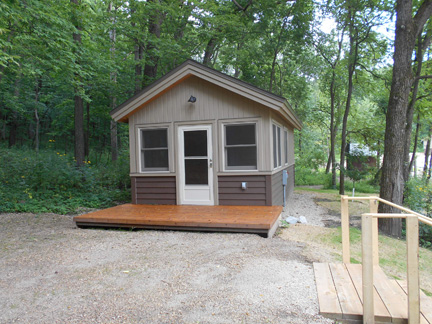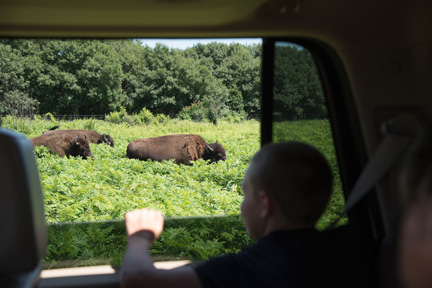Millions Of Public Acres Across Minnesota – This Land Really Is Your Land!
By Harland Hiemstra, DNR Information Officer
This land is your land, this land is my land . . .
This land was made for you and me.
– Woody Guthrie
Legendary American folksinger Woody Guthrie may not have mentioned Minnesota by name when he penned his classic ode to America’s varied and beautiful landscapes, but he certainly could have, given our state’s wealth of natural beauty and public lands.
From the majestic pine trees at Itasca State Park, where the Mississippi River begins, to Blue Mounds State Park, where buffalo roam the wide open prairie; from rushing waters cascading into the world’s largest freshwater lake at Gooseberry Falls State Park on the north shore of Lake Superior, to the lazy spring-fed trout stream of Whitewater State Park in the southeast, Minnesota truly is a spectacular state. It also has one of the best and biggest systems of public lands open to all for recreation and enjoyment 365 days a year.
Across Minnesota, more than 12 million acres of woods, wetlands and wide open spaces are owned by you, the public, and managed by state, local or federal government agencies on your behalf. The Minnesota Department of Natural Resources (DNR) is responsible for nearly half of that total, with about 5.6 million acres, broken down into various types of units including:
- 66 state parks and 9 state recreation areas;
- 59 state forests;
- 1,457 wildlife management areas (WMAs);
- 700 aquatic management areas (AMAs);
- 166 scientific and natural areas (SNAs).
Each type of land managed by DNR has different purposes, uses and rules. SNAs, for instance, are set aside because they’re examples of unique habitat types or geological features that may be home to rare plants and animals. They’re open to hiking and nature observation, but they don’t have developed trails or other amenities such as restrooms. Pets are not allowed, camping and biking are prohibited, and hunting may or may not be permitted, depending on the unit’s specific management plans.
State forests, on the other hand, are open to hunting, camping, gathering of berries and mushrooms, and some even allow the use of off-road vehicles such as ATVs, 4WD trucks and dirt bikes. WMAs are set aside to protect habitat for wildlife and to provide places where anyone can hunt; they’re also popular with birders and hikers outside of hunting season. AMAs protect shoreline habitat and provide places where people can fish.
State parks put some of Minnesota’s most scenic places into public ownership, offering people a place to hike, camp, canoe, bike, or just sit around a campfire and enjoy the great outdoors while creating lasting family memories. There are also national forests and other federal lands that are open to public use, as well as county and city lands.
In short, Minnesota’s outdoor recreation system includes a place for everyone. This land really is your land. This land is made for you and me!
A Minnesota Legacy turns 10
Minnesotans have repeatedly expressed their support for public lands, the outdoors and our natural environment loud and clear. Ten years ago this fall, in the middle of a major economic downturn, Minnesota residents voted to voluntarily increase their own sales tax by 3/8 of a cent on every dollar spent, with the money constitutionally dedicated to preserving and enhancing the natural environment, water quality, parks and trails, and our cultural and artistic heritage.
The Minnesota DNR has been allocated about 19 percent of the funds generated by the Legacy Amendment, roughly $463 million. DNR has used that money to make Minnesota a better place for its citizens by upgrading parks and trails; restoring, enhancing and protecting habitat for fish, game and wildlife; and restoring and protecting the quality of our lakes, rivers and streams.
It’s a Legacy to be proud of!










